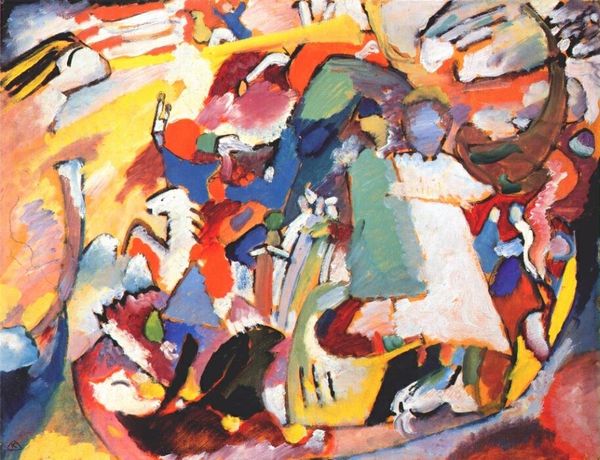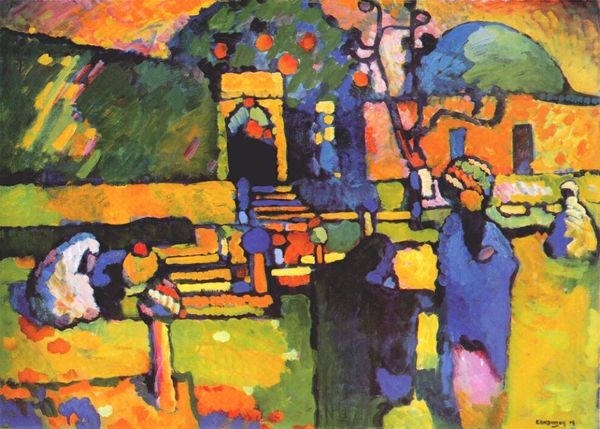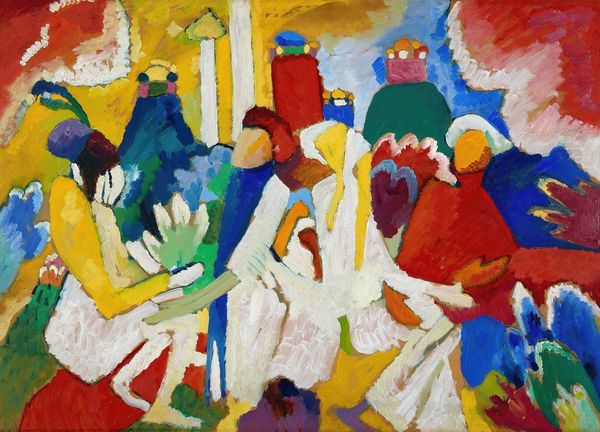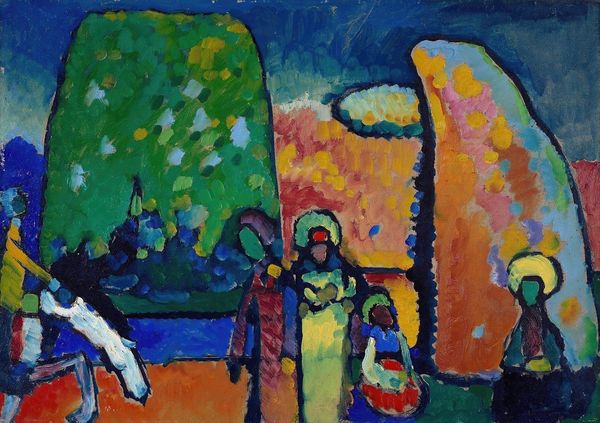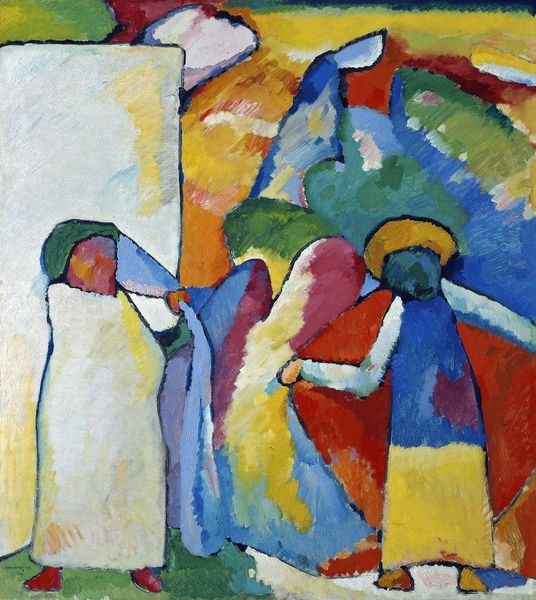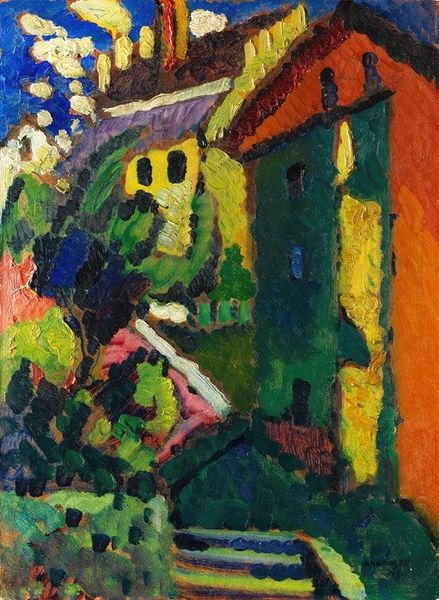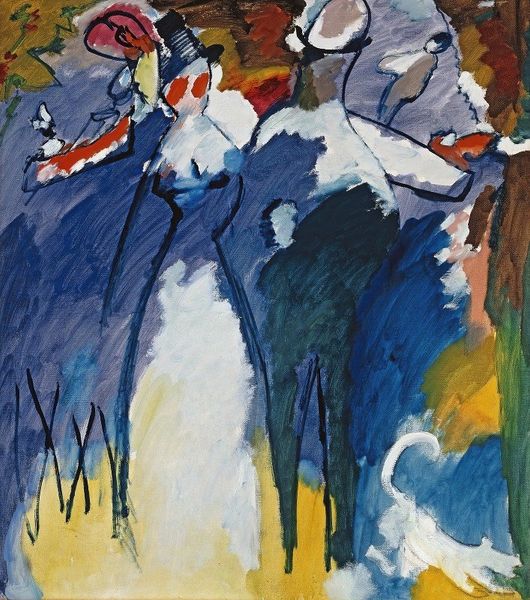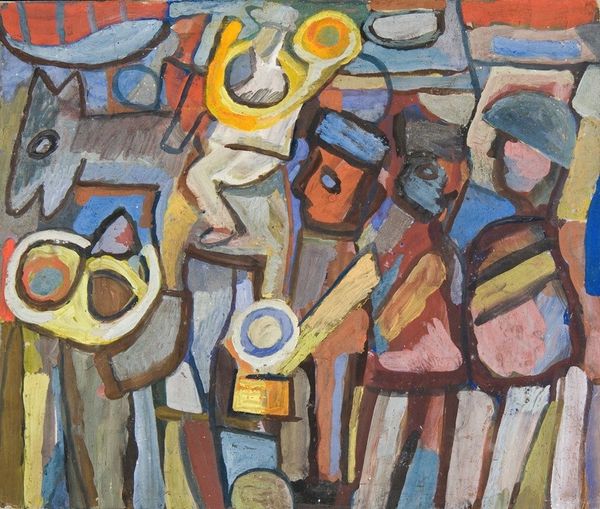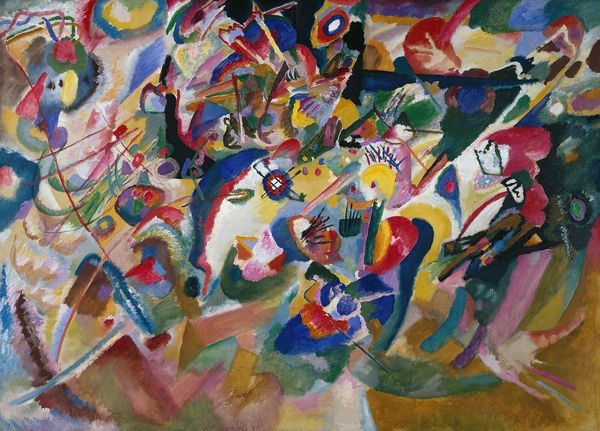
Copyright: Public domain
Curator: Aristarkh Lentulov’s “Tverskoi Boulevard,” painted in 1917, offers a striking interpretation of Moscow’s urban landscape. It's currently housed in the Tretyakov Gallery. Editor: Wow, it’s a jumble, isn’t it? Almost violently colourful. I’m immediately drawn to the deep reds that seem to pulse through the entire composition. Curator: The painting is exemplary of the Russian Avant-Garde, drawing from Cubism and Fauvism. Consider the period, 1917; the painting was made in the crucible of World War One and the Russian Revolution, capturing a moment of profound social and political upheaval. How might that affect his representation of Moscow? Editor: Revolution definitely makes sense when viewing the painting. I’m captivated by how Lentulov translates this street view. Look how he broke down recognizable forms like the onion domes of churches and the city’s architecture, not really as recognizable structures, but nearly raw material. I'm intrigued by the materiality. Curator: Lentulov utilizes those recognisable symbols but renders them unstable and dynamic, reflecting the societal flux of the time. The visible brushstrokes and bold application of oil paint further contribute to that sense of immediacy and the breaking of the older aesthetic tradition. Editor: I also can’t help but see those bold colours and disjointed forms as reflections of the physical act of painting itself. The application of paint, the visible labor, speaks volumes. It feels almost defiant. Curator: That defiance, as you put it, could also be seen as a bold artistic statement during a time of cultural re-evaluation. The state was seeking a new visual language, turning its back on representational art, so it could serve ideological needs, promoting revolutionary ideals and forging a new identity. Editor: Absolutely, and this isn’t merely a formal exercise. The choice of subject matter – a bustling Moscow boulevard – shows the shift in art away from traditional elites and toward urban landscapes. How was his painting seen publicly, given its revolutionary style and timing? Curator: Initially met with some bewilderment, later such works helped forge new modes of seeing in the revolutionary public and establish new paradigms of what an artwork should or could look like. The piece reflects not just a street but a turning point in how the public saw themselves. Editor: Lentulov makes one contemplate on his art practices and choices as much as to meditate on Russian streets. Curator: I concur completely! “Tverskoi Boulevard" provides a powerful record, and to ponder what those days felt like.
Comments
No comments
Be the first to comment and join the conversation on the ultimate creative platform.
